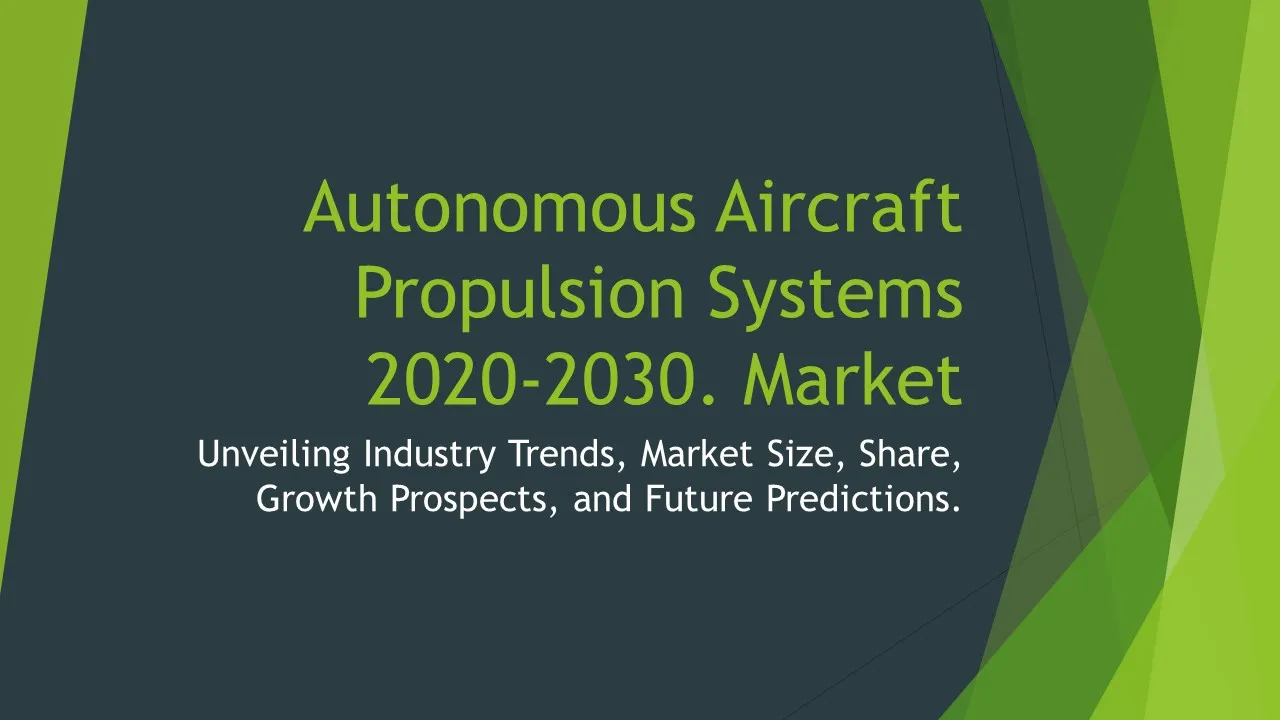Vehicle Sensor
Vehicle Sensor Market Segments - by Type (Temperature Sensors, Pressure Sensors, Proximity Sensors, Motion Sensors, and Gas Sensors), Vehicle Type (Passenger Vehicles, Commercial Vehicles, Electric Vehicles, and Autonomous Vehicles), Application (Safety and Security, Emission Control, Vehicle Health Monitoring, Parking Assistance, and Others), Technology (LiDAR, Radar, Ultrasonic, Infrared, and Capacitive), and Region (North America, Europe, Asia Pacific, Latin America, and Middle East & Africa) - Global Industry Analysis, Growth, Share, Size, Trends, and Forecast 2025-2035
- Report Preview
- Table Of Content
- Segments
- Methodology
Vehicle Sensor Market Outlook
The global vehicle sensor market is projected to reach approximately USD 44 billion by 2035, expanding at a robust compound annual growth rate (CAGR) of over 8% from 2025 to 2035. This growth is significantly driven by the increasing demand for advanced driver-assistance systems (ADAS), stringent government regulations on vehicle safety, and the rising adoption of electric and autonomous vehicles. Furthermore, the trend toward connected cars is propelling investments in sensor technology, as these devices are integral to the functionality of smart vehicles. The emergence of electric vehicles (EVs) is also creating new opportunities for sensor applications, particularly in monitoring battery performance and vehicle health. Moreover, advancements in sensor technologies, including miniaturization and enhanced accuracy, are further lending momentum to the market's expansion.
Growth Factor of the Market
The vehicle sensor market is experiencing substantial growth, primarily fueled by the progressive shift towards automation in the automotive industry. As vehicles become increasingly equipped with sophisticated technologies, the demand for precise and reliable sensors is surging. Factors such as the need for enhanced safety features, improved fuel efficiency, and reduced emissions are propelling manufacturers to integrate advanced sensor systems into their models. Additionally, rising consumer expectations for comfort and convenience are pushing automakers to adopt features like parking assistance and collision avoidance systems, which rely heavily on sensors. The regulatory landscape is also evolving, with governments enforcing stricter safety standards, thereby necessitating the integration of numerous sensors in vehicles. As a result, the market for vehicle sensors is projected to witness substantial growth in the coming years, driven by these multifaceted growth factors.
Key Highlights of the Market
- The vehicle sensor market is projected to reach USD 44 billion by 2035.
- Advanced driver-assistance systems (ADAS) are a major factor driving market growth.
- Electric and autonomous vehicles are creating new opportunities for sensor applications.
- Miniaturization and enhanced accuracy of sensors are critical trends influencing the market.
- Stringent government regulations on vehicle safety standards are propelling sensor integration.
By Type
Temperature Sensors:
Temperature sensors play a vital role in monitoring the thermal conditions within a vehicle, particularly in engine management and climate control systems. These sensors help ensure optimal engine performance and efficiency by providing real-time temperature data, enabling the engine control unit (ECU) to make necessary adjustments. Additionally, temperature sensors are instrumental in managing the interior climate of vehicles, contributing to passenger comfort. As advancements in technology lead to more precise and responsive temperature sensors, their adoption in vehicles is expected to rise significantly, particularly in electric and hybrid vehicles, where thermal management is crucial to battery performance and longevity.
Pressure Sensors:
Pressure sensors are critical for various applications in modern vehicles, including tire pressure monitoring systems (TPMS), oil pressure monitoring, and fuel pressure control. The increasing emphasis on safety and fuel efficiency is driving the demand for pressure sensors, as they help prevent accidents caused by tire blowouts and ensure optimal engine performance by monitoring oil and fuel pressures. Furthermore, with the growing adoption of autonomous driving technologies, pressure sensors are also being integrated into various performance monitoring systems. Their ability to provide accurate pressure readings in real-time enhances the overall safety and reliability of vehicles, making them indispensable in today's automotive landscape.
Proximity Sensors:
Proximity sensors are becoming increasingly commonplace in vehicles, playing a crucial role in collision avoidance systems and parking assistance features. These sensors detect nearby objects and alert drivers to potential hazards, significantly enhancing vehicle safety. With the growing focus on reducing accidents and improving driver awareness, the demand for proximity sensors is surging. Technologies such as ultrasonic and infrared sensors are widely used for these applications, enabling vehicles to navigate tight spaces with ease. As manufacturers continue to innovate, the integration of proximity sensors into vehicles is expected to rise, particularly with the advent of advanced driver-assistance systems and autonomous vehicles.
Motion Sensors:
Motion sensors are vital for numerous applications in modern vehicles, particularly in security systems, stability control, and navigation systems. These sensors detect vehicle movements and orientations, providing critical data to enhance safety and performance. For instance, motion sensors are integral in systems that prevent skidding and loss of control by adjusting brake and acceleration responses according to real-time motion data. Additionally, with the rise of connected and autonomous vehicles, motion sensors are increasingly used to improve location accuracy and support advanced navigation systems. As the automotive industry embraces more automated solutions, the importance of motion sensors continues to grow, positioning them as essential components for future vehicle designs.
Gas Sensors:
Gas sensors are increasingly recognized for their role in monitoring vehicle emissions and ensuring compliance with environmental regulations. These sensors detect harmful gases, such as carbon monoxide and nitrogen oxides, helping manufacturers develop cleaner and more efficient vehicles. With the global push for sustainable transportation and stringent emission regulations, the demand for gas sensors is expected to rise sharply. Furthermore, gas sensors can also contribute to improving passenger safety by detecting harmful gases within the cabin. As more vehicles adopt eco-friendly technologies, gas sensors will play a pivotal role in facilitating the transition towards greener automotive solutions.
By Vehicle Type
Passenger Vehicles:
Passenger vehicles are one of the largest segments in the vehicle sensor market, driven by the increasing consumer demand for safety, comfort, and connectivity. As automakers focus on enhancing the driving experience, the integration of advanced sensors in passenger vehicles has become paramount. Features such as emergency braking, adaptive cruise control, and lane-keeping assistance rely heavily on the effective functioning of various sensors, including radar, LiDAR, and cameras. With the continuous development of smart features, the passenger vehicle segment is expected to witness significant growth, as manufacturers strive to meet consumer expectations for more sophisticated and safer vehicles.
Commercial Vehicles:
The commercial vehicle segment is also experiencing notable growth in the vehicle sensor market, driven by the increasing emphasis on fleet management and operational efficiency. Sensors in commercial vehicles facilitate real-time monitoring of critical parameters such as tire pressure, fuel consumption, and engine performance, thereby enabling fleet operators to optimize their operations. Additionally, safety features such as blind-spot detection and collision avoidance systems are becoming standard in commercial vehicles, further driving the demand for advanced sensors. As logistics and transportation companies increasingly adopt technology to enhance efficiency and safety, the commercial vehicle segment is poised for substantial growth in the coming years.
Electric Vehicles:
Electric vehicles (EVs) are gaining traction in the automotive market, significantly influencing the demand for vehicle sensors. The unique requirements of EVs, including battery management and thermal regulation, necessitate the integration of advanced sensor technologies. Sensors play a crucial role in monitoring battery health, ensuring optimal charging and discharging cycles, and enhancing overall vehicle performance. Additionally, as EVs often come equipped with advanced driver-assistance systems, the demand for sensors that support features such as pedestrian detection and autonomous driving capabilities is rising. With the global focus on sustainable transportation, the EV segment is expected to experience significant growth, driving further advancements in vehicle sensor technologies.
Autonomous Vehicles:
Autonomous vehicles represent the cutting edge of automotive technology, relying heavily on an array of sensors to navigate and operate safely. Sensors such as LiDAR, radar, and cameras work in tandem to create a comprehensive understanding of the vehicle's surroundings, enabling them to make informed decisions in real-time. The development of autonomous vehicles is accelerating, fueled by advancements in artificial intelligence and machine learning, which are enhancing sensor capabilities. As manufacturers continue to invest in autonomous technology, the demand for sophisticated sensor systems is expected to rise sharply. This segment is poised to redefine the automotive landscape, presenting unprecedented opportunities for growth within the vehicle sensor market.
By Application
Safety and Security:
Safety and security applications are paramount in the vehicle sensor market, driving significant demand for advanced sensor technologies. Features such as airbags, anti-lock braking systems, and stability control rely heavily on various sensors to function effectively. The growing focus on reducing road accidents and enhancing passenger safety has led automakers to invest in sophisticated sensor systems that provide real-time data and alerts. Additionally, advancements in technologies such as camera-based systems for lane departure warnings and pedestrian detection are further enhancing the safety features in vehicles. As consumer awareness about safety increases, the demand for sensors in safety and security applications is expected to grow substantially.
Emission Control:
Emission control applications are gaining critical importance as governments worldwide implement stricter emissions regulations. Sensors are vital in monitoring and controlling vehicle emissions, ensuring compliance with environmental standards. Technologies such as oxygen sensors, NOx sensors, and particulate matter sensors are increasingly integrated into vehicles to optimize combustion processes and reduce harmful emissions. With the rise of eco-friendly vehicles and technologies, such as hybrid and electric vehicles, the demand for emission control sensors is projected to escalate. As automakers strive to meet regulatory requirements and consumer expectations for greener vehicles, emission control applications will continue to drive growth in the vehicle sensor market.
Vehicle Health Monitoring:
Vehicle health monitoring is becoming an essential application for sensors, contributing to improved vehicle performance and longevity. Sensors that monitor engine temperature, fluid levels, and tire pressure play a critical role in providing real-time data to drivers, enabling them to address potential issues before they escalate. With the rise of connected vehicles, health monitoring systems can now provide remote diagnostics, allowing for proactive maintenance and reducing unexpected breakdowns. As consumers increasingly prioritize vehicle maintenance and reliability, the demand for health monitoring sensors is expected to rise, driving further innovation in the vehicle sensor market.
Parking Assistance:
Parking assistance systems have witnessed substantial growth driven by the increasing complexity of urban driving environments. Sensors play a crucial role in assisting drivers with parallel parking, perpendicular parking, and maneuvering in tight spaces. Technologies such as ultrasonic sensors and cameras help evaluate the surrounding environment, providing real-time feedback to the driver. As urban populations grow and vehicle ownership increases, the demand for parking assistance features is on the rise. Consequently, the vehicle sensor market is expected to expand significantly, with more automakers integrating advanced parking assistance systems into their new models.
Others:
Beyond the key applications mentioned, several other emerging applications for vehicle sensors are shaping the market landscape. These include applications in infotainment systems, driver monitoring systems, and even autonomous delivery vehicles. Sensors in infotainment systems enhance connectivity and user experience by integrating smart technologies, such as voice recognition and gesture control. In driver monitoring systems, sensors can track driver attention and fatigue levels, ensuring safer driving conditions. As the automotive industry continues to innovate and evolve, the range of applications for vehicle sensors is expanding, presenting new opportunities for growth and development within the market.
By Technology
LiDAR:
LiDAR (Light Detection and Ranging) technology is becoming increasingly critical in the vehicle sensor market, particularly for autonomous vehicles. LiDAR sensors utilize laser beams to create high-resolution three-dimensional maps of the surrounding environment, enabling vehicles to navigate safely and accurately. The precision and reliability of LiDAR technology make it an essential component for advanced driver-assistance systems (ADAS) and autonomous driving solutions. As the automotive sector shifts towards greater automation, the integration of LiDAR technology is expected to rise substantially, driving innovation and advancements in sensor capabilities.
Radar:
Radar technology is widely used in the vehicle sensor market for detecting objects and monitoring speed across various conditions. Radar sensors are particularly effective in adverse weather conditions, where visibility may be compromised. They are commonly employed in adaptive cruise control, blind-spot detection, and collision avoidance systems, significantly enhancing vehicle safety. As the demand for advanced safety features increases, the adoption of radar technology in vehicles is expected to grow sharply, making it an essential segment within the vehicle sensor market.
Ultrasonic:
Ultrasonic sensors are widely utilized in parking assistance and collision detection systems, offering cost-effective solutions for real-time object detection. These sensors emit sound waves and measure the time taken for the waves to bounce back, allowing vehicles to ascertain the proximity of nearby objects. The increasing complexity of urban environments is driving the demand for ultrasonic sensors, as they enable safer parking and maneuvering in tight spaces. As automakers continue to prioritize safety and convenience, the integration of ultrasonic sensors in vehicles is expected to expand, further driving growth in the vehicle sensor market.
Infrared:
Infrared sensors are primarily used for detecting heat signatures and providing visibility in low-light conditions. These sensors enhance vehicle safety by enabling features such as night vision and pedestrian detection. As consumer demand for enhanced safety features and advanced driver-assistance systems increases, infrared technology is gaining traction in the vehicle sensor market. With ongoing technological advancements and a growing emphasis on safety and security, the application of infrared sensors in vehicles is expected to expand significantly in the coming years.
Capacitive:
Capacitive sensors are emerging as a useful technology in the vehicle sensor market, particularly for touchless interfaces and interactive displays. These sensors detect changes in capacitance caused by the presence of a finger or conductive object, enabling features such as touch-based controls for infotainment systems and climate settings. As vehicles become more connected and user-centric, the integration of capacitive technology is expected to increase, providing consumers with enhanced convenience and interaction. The growing focus on user experience and innovative designs is driving the adoption of capacitive sensors in the automotive sector.
By Region
The vehicle sensor market exhibits a diverse regional landscape, with North America, Europe, and Asia Pacific emerging as key players in this sector. North America currently holds a significant share of the market, driven by the presence of major automotive manufacturers and advanced technological infrastructure. The region is witnessing a surge in the implementation of advanced driver-assistance systems (ADAS) and autonomous vehicles, resulting in increased demand for sophisticated sensors. The market in North America is expected to grow at a CAGR of over 7% during the forecast period, owing to ongoing investments in research and development and the adoption of smart automotive technologies.
Europe is another prominent region in the vehicle sensor market, characterized by stringent safety regulations and a growing emphasis on sustainable transportation. The European automotive industry is rapidly evolving, with manufacturers prioritizing the development of electric and hybrid vehicles equipped with advanced sensor systems. The demand for vehicle sensors in Europe is anticipated to experience substantial growth, supported by government initiatives aimed at promoting eco-friendly technologies and reducing emissions. The Asia Pacific region is also witnessing robust growth, attributed to the increasing vehicle production and rising consumer demand for advanced safety features. Countries such as China and Japan are leading the charge in sensor technology advancements, positioning the Asia Pacific region as a significant contributor to the overall vehicle sensor market.
Opportunities
As the vehicle sensor market continues to evolve, numerous opportunities are emerging for stakeholders involved in this sector. One of the most significant opportunities lies in the development of autonomous vehicles, which heavily rely on a variety of sensors for navigation and safety. The ongoing advancements in artificial intelligence and machine learning are enabling more sophisticated algorithms that enhance sensor performance and accuracy. As regulatory frameworks become more accommodating for autonomous vehicles, manufacturers can capitalize on this trend by investing in innovative sensor technologies that meet the demands of this rapidly growing segment. Furthermore, as consumer preferences shift towards electric vehicles, the need for specialized sensors to monitor battery health and optimize performance presents additional growth prospects for sensor manufacturers.
Another promising opportunity in the vehicle sensor market is the integration of connectivity and smart technologies in vehicles. The rise of connected cars is driving demand for sensors that facilitate data exchange between vehicles and the surrounding infrastructure. This trend is opening new avenues for application development, including fleet management solutions, remote diagnostics, and predictive maintenance services. As automakers increasingly focus on delivering enhanced user experiences and fostering connectivity, the demand for advanced vehicle sensors that support these objectives will continue to grow. Stakeholders that can innovate and provide solutions tailored to the evolving automotive landscape will find ample opportunities to capitalize on the expanding vehicle sensor market.
Threats
Despite the significant growth prospects within the vehicle sensor market, several threats could impede progress. One of the primary threats is the rapid pace of technological advancements, which can lead to challenges in maintaining competitive advantage. As new sensor technologies emerge, established players may face pressure to innovate continually, potentially straining resources and leading to increased operational costs. Additionally, the influx of new entrants into the market, particularly from technology sectors, poses a threat to traditional automotive manufacturers, as they must adapt to evolving consumer expectations and technological advancements. This competition could result in price wars and reduced profit margins for established players, impacting overall market stability.
Another critical threat to the vehicle sensor market is the ongoing global supply chain disruptions. The automotive industry is particularly vulnerable to fluctuations in the availability of raw materials and components, which can delay production and increase costs. Such disruptions have become more frequent due to geopolitical tensions, trade policies, and the aftermath of the COVID-19 pandemic. As vehicle manufacturers grapple with these challenges, the demand for sensors may be affected, potentially stunting market growth. To mitigate these threats, stakeholders need to develop robust supply chain strategies that enhance resilience and adaptability to unforeseen challenges.
Competitor Outlook
- Robert Bosch GmbH
- Continental AG
- Delphi Technologies
- Autoliv Inc.
- DENSO Corporation
- STMicroelectronics N.V.
- Honeywell International Inc.
- Infineon Technologies AG
- Valeo SA
- Aptiv PLC
- Texas Instruments Incorporated
- Siemens AG
- NXP Semiconductors N.V.
- Analog Devices, Inc.
- Elmos Semiconductor AG
- Vishay Intertechnology, Inc.
The competitive landscape of the vehicle sensor market is characterized by a mix of established players and emerging companies, all striving to innovate and capture market share. Major companies, such as Robert Bosch GmbH and Continental AG, have established themselves as leaders in the automotive sensor segment, leveraging their extensive experience and technological expertise to develop advanced sensor solutions. These companies are actively investing in research and development to enhance their product offerings and remain competitive in the rapidly evolving market. Their focus on advanced driver-assistance systems and autonomous driving technologies positions them well to capitalize on the growing demand for vehicle sensors.
In recent years, partnerships and collaborations have emerged as a significant strategy among industry players to strengthen their market position. Companies like DENSO Corporation and Delphi Technologies are collaborating with automakers to integrate their sensor technologies into next-generation vehicles, ensuring that they meet the demands for safety, efficiency, and connectivity. Additionally, emerging players in the market, such as Infineon Technologies and NXP Semiconductors, are focusing on developing innovative sensor solutions that cater to the evolving automotive ecosystem. Their agility in adopting new technologies and responding to market trends allows them to capture niche segments and drive competition within the vehicle sensor market.
Furthermore, as the automotive industry transitions towards electrification and automation, sensor manufacturers are adapting their strategies to stay relevant. For instance, companies like Valeo SA and Autoliv Inc. are investing in state-of-the-art sensor technologies such as LiDAR and radar systems to support the development of autonomous vehicles. The emphasis on sustainability and environmental responsibility is also shaping the competitive landscape, prompting sensor manufacturers to invest in eco-friendly technologies. As the vehicle sensor market continues to grow, the competitive dynamics will evolve, with companies focusing on innovation, collaboration, and sustainability to seize new opportunities in this vibrant sector.
1 Appendix
- 1.1 List of Tables
- 1.2 List of Figures
2 Introduction
- 2.1 Market Definition
- 2.2 Scope of the Report
- 2.3 Study Assumptions
- 2.4 Base Currency & Forecast Periods
3 Market Dynamics
- 3.1 Market Growth Factors
- 3.2 Economic & Global Events
- 3.3 Innovation Trends
- 3.4 Supply Chain Analysis
4 Consumer Behavior
- 4.1 Market Trends
- 4.2 Pricing Analysis
- 4.3 Buyer Insights
5 Key Player Profiles
- 5.1 Valeo SA
- 5.1.1 Business Overview
- 5.1.2 Products & Services
- 5.1.3 Financials
- 5.1.4 Recent Developments
- 5.1.5 SWOT Analysis
- 5.2 Aptiv PLC
- 5.2.1 Business Overview
- 5.2.2 Products & Services
- 5.2.3 Financials
- 5.2.4 Recent Developments
- 5.2.5 SWOT Analysis
- 5.3 Siemens AG
- 5.3.1 Business Overview
- 5.3.2 Products & Services
- 5.3.3 Financials
- 5.3.4 Recent Developments
- 5.3.5 SWOT Analysis
- 5.4 Autoliv Inc.
- 5.4.1 Business Overview
- 5.4.2 Products & Services
- 5.4.3 Financials
- 5.4.4 Recent Developments
- 5.4.5 SWOT Analysis
- 5.5 Continental AG
- 5.5.1 Business Overview
- 5.5.2 Products & Services
- 5.5.3 Financials
- 5.5.4 Recent Developments
- 5.5.5 SWOT Analysis
- 5.6 DENSO Corporation
- 5.6.1 Business Overview
- 5.6.2 Products & Services
- 5.6.3 Financials
- 5.6.4 Recent Developments
- 5.6.5 SWOT Analysis
- 5.7 Robert Bosch GmbH
- 5.7.1 Business Overview
- 5.7.2 Products & Services
- 5.7.3 Financials
- 5.7.4 Recent Developments
- 5.7.5 SWOT Analysis
- 5.8 Delphi Technologies
- 5.8.1 Business Overview
- 5.8.2 Products & Services
- 5.8.3 Financials
- 5.8.4 Recent Developments
- 5.8.5 SWOT Analysis
- 5.9 Analog Devices, Inc.
- 5.9.1 Business Overview
- 5.9.2 Products & Services
- 5.9.3 Financials
- 5.9.4 Recent Developments
- 5.9.5 SWOT Analysis
- 5.10 Elmos Semiconductor AG
- 5.10.1 Business Overview
- 5.10.2 Products & Services
- 5.10.3 Financials
- 5.10.4 Recent Developments
- 5.10.5 SWOT Analysis
- 5.11 NXP Semiconductors N.V.
- 5.11.1 Business Overview
- 5.11.2 Products & Services
- 5.11.3 Financials
- 5.11.4 Recent Developments
- 5.11.5 SWOT Analysis
- 5.12 STMicroelectronics N.V.
- 5.12.1 Business Overview
- 5.12.2 Products & Services
- 5.12.3 Financials
- 5.12.4 Recent Developments
- 5.12.5 SWOT Analysis
- 5.13 Infineon Technologies AG
- 5.13.1 Business Overview
- 5.13.2 Products & Services
- 5.13.3 Financials
- 5.13.4 Recent Developments
- 5.13.5 SWOT Analysis
- 5.14 Honeywell International Inc.
- 5.14.1 Business Overview
- 5.14.2 Products & Services
- 5.14.3 Financials
- 5.14.4 Recent Developments
- 5.14.5 SWOT Analysis
- 5.15 Vishay Intertechnology, Inc.
- 5.15.1 Business Overview
- 5.15.2 Products & Services
- 5.15.3 Financials
- 5.15.4 Recent Developments
- 5.15.5 SWOT Analysis
- 5.16 Texas Instruments Incorporated
- 5.16.1 Business Overview
- 5.16.2 Products & Services
- 5.16.3 Financials
- 5.16.4 Recent Developments
- 5.16.5 SWOT Analysis
- 5.1 Valeo SA
6 Market Segmentation
- 6.1 Vehicle Sensor Market, By Type
- 6.1.1 Temperature Sensors
- 6.1.2 Pressure Sensors
- 6.1.3 Proximity Sensors
- 6.1.4 Motion Sensors
- 6.1.5 Gas Sensors
- 6.2 Vehicle Sensor Market, By Application
- 6.2.1 Safety and Security
- 6.2.2 Emission Control
- 6.2.3 Vehicle Health Monitoring
- 6.2.4 Parking Assistance
- 6.2.5 Others
- 6.3 Vehicle Sensor Market, By Vehicle Type
- 6.3.1 Passenger Vehicles
- 6.3.2 Commercial Vehicles
- 6.3.3 Electric Vehicles
- 6.3.4 Autonomous Vehicles
- 6.1 Vehicle Sensor Market, By Type
7 Competitive Analysis
- 7.1 Key Player Comparison
- 7.2 Market Share Analysis
- 7.3 Investment Trends
- 7.4 SWOT Analysis
8 Research Methodology
- 8.1 Analysis Design
- 8.2 Research Phases
- 8.3 Study Timeline
9 Future Market Outlook
- 9.1 Growth Forecast
- 9.2 Market Evolution
10 Geographical Overview
- 10.1 Europe - Market Analysis
- 10.1.1 By Country
- 10.1.1.1 UK
- 10.1.1.2 France
- 10.1.1.3 Germany
- 10.1.1.4 Spain
- 10.1.1.5 Italy
- 10.1.1 By Country
- 10.2 Asia Pacific - Market Analysis
- 10.2.1 By Country
- 10.2.1.1 India
- 10.2.1.2 China
- 10.2.1.3 Japan
- 10.2.1.4 South Korea
- 10.2.1 By Country
- 10.3 Latin America - Market Analysis
- 10.3.1 By Country
- 10.3.1.1 Brazil
- 10.3.1.2 Argentina
- 10.3.1.3 Mexico
- 10.3.1 By Country
- 10.4 North America - Market Analysis
- 10.4.1 By Country
- 10.4.1.1 USA
- 10.4.1.2 Canada
- 10.4.1 By Country
- 10.5 Vehicle Sensor Market by Region
- 10.6 Middle East & Africa - Market Analysis
- 10.6.1 By Country
- 10.6.1.1 Middle East
- 10.6.1.2 Africa
- 10.6.1 By Country
- 10.1 Europe - Market Analysis
11 Global Economic Factors
- 11.1 Inflation Impact
- 11.2 Trade Policies
12 Technology & Innovation
- 12.1 Emerging Technologies
- 12.2 AI & Digital Trends
- 12.3 Patent Research
13 Investment & Market Growth
- 13.1 Funding Trends
- 13.2 Future Market Projections
14 Market Overview & Key Insights
- 14.1 Executive Summary
- 14.2 Key Trends
- 14.3 Market Challenges
- 14.4 Regulatory Landscape
Segments Analyzed in the Report
The global Vehicle Sensor market is categorized based on
By Type
- Temperature Sensors
- Pressure Sensors
- Proximity Sensors
- Motion Sensors
- Gas Sensors
By Vehicle Type
- Passenger Vehicles
- Commercial Vehicles
- Electric Vehicles
- Autonomous Vehicles
By Application
- Safety and Security
- Emission Control
- Vehicle Health Monitoring
- Parking Assistance
- Others
By Region
- North America
- Europe
- Asia Pacific
- Latin America
- Middle East & Africa
Key Players
- Robert Bosch GmbH
- Continental AG
- Delphi Technologies
- Autoliv Inc.
- DENSO Corporation
- STMicroelectronics N.V.
- Honeywell International Inc.
- Infineon Technologies AG
- Valeo SA
- Aptiv PLC
- Texas Instruments Incorporated
- Siemens AG
- NXP Semiconductors N.V.
- Analog Devices, Inc.
- Elmos Semiconductor AG
- Vishay Intertechnology, Inc.
- Publish Date : Jan 20 ,2025
- Report ID : AU-1345
- No. Of Pages : 100
- Format : |
- Ratings : 4.5 (110 Reviews)









